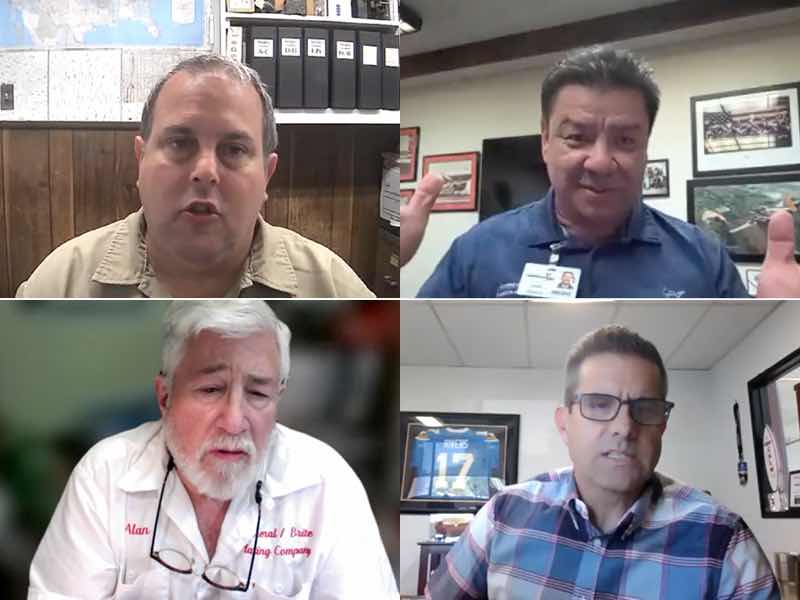More than 100 California plating operators joined a conference call this week to discuss how to prepare to fight a potential ban on decorative and functional chrome finishing in the state.
 Bryan LeikerThe Metal Finishing Association of California held the online meeting to discuss the California Air Resources Board’s expected new rules to ban any new chrome finishing operations or expansions by January 2024 and to ban decorative and functional chrome operations by the beginning of 2026.
Bryan LeikerThe Metal Finishing Association of California held the online meeting to discuss the California Air Resources Board’s expected new rules to ban any new chrome finishing operations or expansions by January 2024 and to ban decorative and functional chrome operations by the beginning of 2026.
The proposed rules also outlaw all functional hard chrome plating and chromic acid anodizing operations by the beginning of 2039.
The meeting this week was an attempt to boost member shops — and, more importantly, their customers — to contact California senate and assembly members to protect the CARB rules and to implore that the new regulations will force OEMs to take the work out of the state resulting in the closing of hundreds of plating shops.
“I think we have now motivated a new group of platters and industry colleagues to join in our efforts,” says Bryan Leiker, Executive Director of Metal Finishing Association of California of Southern California. “The association continues to fight hard for fair and science-based regulatory rules that make sense.”
Lost Businesses and Jobs
The rule that CARB is trying to pass will do nothing to meaningfully lower hex chrome emissions or better protect the environment, says Leiker, whose family anodizing business is located in Burbank.
“It will lead to many businesses closing and thousands of lost jobs in California,” he says. “It is paramount that we continue to motivate people to get involved and for them to contact CARB.”
Leiker and MFACA advisor Jerry Desmond advised the shops on the upcoming CARB timeline for initiating the rules, which includes a staff presentation to the board in December or January and a possible vote on the measures by next spring or summer.
In between, Leiker and Desmond encouraged shops to take an active role in defeating the regulations. Several steps mentioned were:
- Email CARB staff and its board members.
- Contact Senate and Assembly members
- Activate the shop’s customers to also advocate on the industry's behalf
- And testify at any CARB hearings on the new regulations.
Several shop owners are angry at how the CARB staff could even propose regulations when, as Leiker pointed out, plating shops are one of the smallest emitters of hex chrome into the environment, accounting for less than 1% of statewide hex chrome emissions.
Facts Don't Add Up
Those facts don’t add up, says Art Holman, who is with Sherm’s Custom Plating in Sacramento, which he says is a “fairly small to medium size” shop with 12 employees.
“We ran just 39,000 amps last year of chrome work,” Holman says. “I generate about 2/10s of a gram of hex chrome annually. They have not produced any evidence that I am the problem.”
Alan Olick from General Brite Plating in Los Angeles says it will be an uphill battle to “defeat city hall.”
“When they are talking about parts per million, nanograms, and parts per billion and trillion, none of us can ever compete with those numbers,” Olick says. “The numbers are not true, and they are not real, and they are not backed by science.”
He says environmentalists are using the ban as an excuse to single out the finishing industry.
“I’ve been in plating since 1969, and I don’t know of any plating shop that has been sued by someone getting sick from chrome or any other kind of plating,” Olick says.
Leiker told the plating group that the new regulations would lead to many businesses closing and thousands of lost jobs in California.
“It is paramount that we continue to motivate people to get involved and for them to contact CARB,” he says.
The California Air Resources Board consists of 14 voting members and two ex officio nonvoting members who are members of the legislature, one from the Senate and the other from the Assembly. Of the 14 voting members, 12 are appointed by the Governor with Senate confirmation and include six who serve on local air districts, four experts in fields that shape air quality rules, and two public members.
The other two voting members represent environmental justice communities and are appointed one each by the Senate Rules Committee and the Assembly Speaker. The Chair serves as the only full-time member and is appointed by the Governor from among the voting members.



































